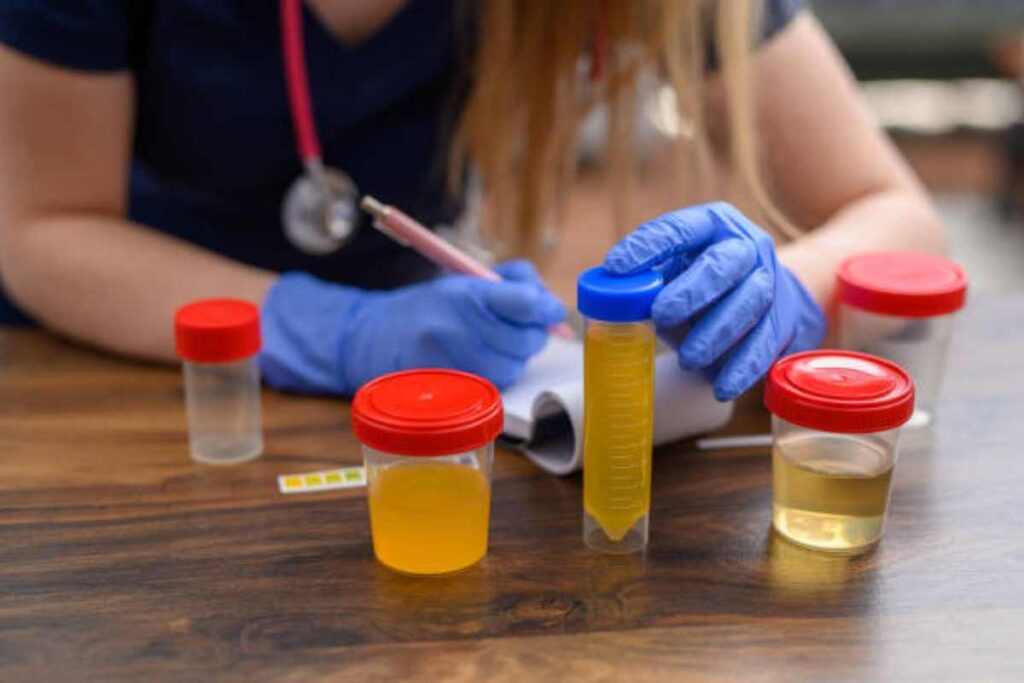A stool calprotectin test can help determine whether you have inflammatory or noninflammatory bowel disease. The information it provides may also eliminate the need for more invasive testing.
A stool calprotectin test is a noninvasive test that can help detect and measure levels of inflammation in the gut.
Calprotectin is a protein shaped by white blood cells in response to inflammation. When inflammation occurs in the intestines, neutrophils move to the inflamed part and release calprotectin to fight disease or infection.
High levels of calprotectin in the stool may be a sign of health problems affecting the stomach tract, such as:
- Inflammatory bowel disease (IBD), including ulcerative and Crohn’s illness
- bacterial, viral, or scrounging infections
- colorectal or duodenal cancer
Keep reading to learn more about how a stool calprotectin test is performed and what it can tell you about your gastrointestinal tract.
Who Should Get a Calprotectin Stool Test?
Your health care provider may recommend a stool test for calprotectin if you have gastrointestinal symptoms such as:
- Watery or persistent diarrhoea
- Abdominal cramps
- Blood or mucus in stool
- Black, tarry stools
- Abdominal pain
- Frequent and urgent need to defecate
- Unexplained weight loss
- Rectal bleeding
- Swelling
Many of these symptoms can be caused by IBDs, such as ulcerative colitis and Crohn’s illness. However, they can also be caused by irritable intestine syndrome (IBS), certain cancers, or infections.
A calprotectin test can help your doctor detect intestinal inflammation, which can help determine if you need further tests to identify the underlying cause.
If you’re experiencing symptoms that aren’t cause for concern, such as diarrhoea, bloating, and mucus in your stool, your doctor may recommend a calprotectin test.
According to the UK National Health Service, the specificity and sensitivity of the test for differentiating between IBS and IBD is 90%.
However, if you experience warning symptoms, such as blood in your stool or mysterious weight loss, you must have a calprotectin test and a colonoscopy.
Your doctor may also recommend regular calprotectin testing to monitor your response to treatment if you have IBD.
TheCalprotectin levels can also help predict flare-ups of IBD in people with the disease. Asymptomatic people with high calprotectin levels have an 80% chance of having a flare-up within 6 months (Trusted Source), compared with 20% for people with low calprotectin levels.
How Is the Calprotectin Stool Test Conducted?
To perform this test, you will need to provide a stool sample. The consistency of the stool does not affect its diagnostic value.
A doctor will give you a hygienic container to collect your sample.
It is essential that the sample you provide does not touch any surfaces other than the container and does not contain water or urine. These substances can interfere with test results.
How Long Will It Take to Obtain Results?
The amount of calprotectin in your couch will be restrained in a lab. Results are usually available within 5 days. However, the time may vary depending on the lab.
What do Calprotectin Stool Test Results Mean?
High levels of calprotectin in the stool indicate intestine inflammation, which may indicate ulcerative colitis, Crohn’s disease, colorectal cancer, or infection.
Moderate or low levels mean little or no inflammation in your gut, so your symptoms are most likely caused by noninflammatory bowel disease.
The following table shows regular, moderate, and high calprotectin levels, measured in micrograms per gram (mcg/g) and presented within the reference range of numerical values:
Next steps
- Expected results (low levels, no inflammation): If you don’t have any warning symptoms, your doctor may diagnose IBS, endorse self-care measures, and antidiarrheal or antispasmodic medications to relieve symptoms.
- Moderate results (bordering on elevated): Your doctor may mention repeating the test in a few weeks and prescribe medications to relieve symptoms.
- High results: Additional diagnostic tests will be performed, such as a colonoscopy or sigmoidoscopy. This will assist in providing diagnostic information and determining the next steps in your treatment.
Frequently asked questions
What does high calprotectin in stool mean?
High levels in the stool may indicate underlying health problems, such as ulcerative colitis, Crohn’s disease, a bacterial infection, or certain types of cancer.
What level of calprotectin indicates Crohn’s disease?
The levels above 121 mcg/g are a marker of gut inflammation, which can indicate conditions such as Crohn’s disease. People with levels above 250 mcg/g have a 46% chance of developing IBD, according to North Bristol NHS Trust.
What does a faecal calprotectin test for?
It is performed for inflammation in the intestine.
What cancers cause high calprotectin?
Some types of cancer that can cause high levels include colorectal cancer and bowel cancer.
Takeaway
The stool calprotectin test is a noninvasive test that can help differentiate between IBD and IBS. It can also indicate the attendance or absence of infection or colorectal cancer.
The test involves the distribution of a stool sample to a lab. The lab analyzes the sample and directs the results to your doctor, who uses them to control whether further testing is needed.


